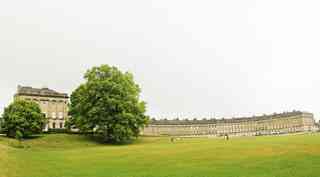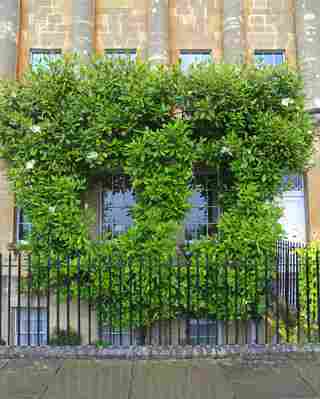When I was a young architecture student, I built a cardboard model of John Wood the Younger’s Royal Crescent in Bath, England. But until I first visited the landmark, many years later, I didn’t fully understand the layered history and origins of the town and its sensitive planning and architecture. The name Bath comes from the Roman baths and temple constructed at the site of hot springs in A.D. 60. The abbey was erected in the seventh century as a religious center and was rebuilt many times from the 12th century through the 19th century. The town planning was sophisticated and geared toward the visual, with height restrictions and ample usage of a local stone whose richness and golden color could make a rainy day feel warm and cozy, as was the case on my most recent visit. In the 18th century, Bath was transformed into a spa town, and it is one of the finest examples of the architectural movement known as Georgian Classicism. Please join me on a Roman holiday in Bath, England.

Architect John Wood the Younger designed the Royal Crescent, which was built between 1767 and 1774; it was a very modern way of creating harmony with the design of a consistent sweeping façade that then let individuals create their own designs with the architect of their choice.

In order to bring light and landscape into all floors of the Royal Crescent, a lower courtyard was built below grade.

A view of Victoria Park from one of the residences of the Royal Crescent. The dramatic drop in the landscape is created through a ditch called a ha-ha, which invisibly separates the lower and upper levels of the greens.
Architect John Wood the Elder (father of the aforementioned builder) passed away within three months of the start of construction on the Circus, which is considered his masterpiece. Inspired by the Roman Colosseum, it has the unique distinction of three classical orders stacked on top of one another with Greek Doric, Roman, and Corinthian columns invoking a new kind of classicism. The landmark residences were home to many famous people, including painter Thomas Gainsborough, who used his space as his portrait studio.
Robert Adams’s 1774 Pulteney Bridge spans the Avon River. Similar to Venice’s Rialto, the bridge is lined with shops on both sides. The façade was designed in a symmetrical Palladian style at the peak of the Georgian era.
Built on the former site of a Norman abbey, this 16th-century version includes flying buttresses and a pierced parapet. Adjacent is the entrance to the Roman baths and the Pump Room, which was designed by Thomas Baldwin, a local builder who became the town architect in 1780.
The interior of the Bath Abbey with its exuberant fan-shaped vaults; the nave was added in the 19th century. The light-filled space features more than 50 windows.
The pump room was the scene of social life in the 18th century. Local resident Jane Austen even wrote about it in her novels. The building underwent several expansions throughout the 18th century, and an upper floor was added in the 19th century. It now houses an elegant restaurant.
